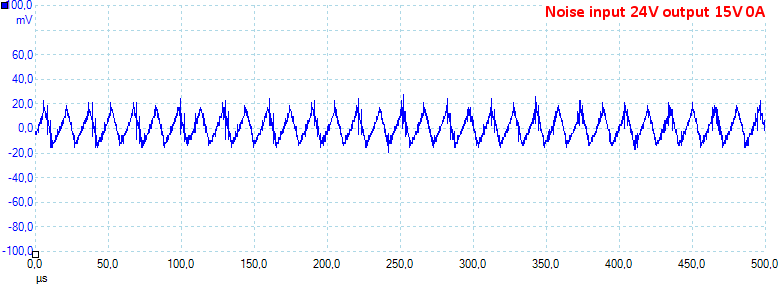Power supply frontend DPS5020-USB 50V/15A, charts

This is all the charts without many comments, for the review see here.
Contents
Load sweep
Load Test
Voltage sweep
Voltage sweep, no load
Voltage sweep, output shorted
On/off charts
Noise charts
Load sweep
The first voltage is input voltage, the second voltage is output voltage.

The input voltage was too low at 19A to maintain output. The fan starts at 10A

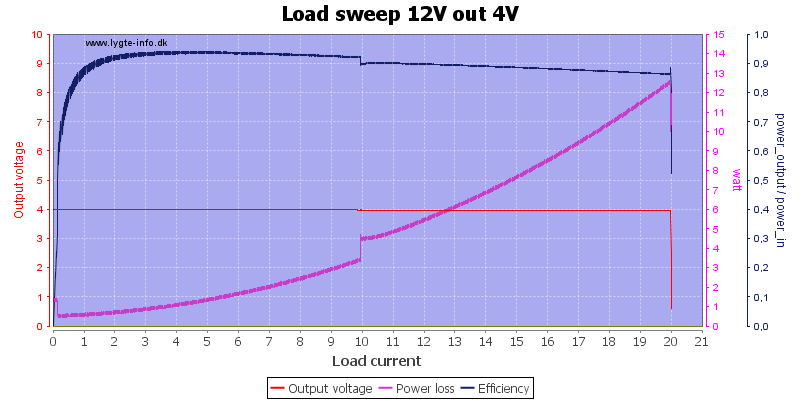



Here the fan starts before 10A, it looks like it also has a temperature sensor for fan control.





















Load Test
These test are done with fixed input voltage, fixed output voltage and constant current. The purpose is to see if the output stays stable when the power supply warms up and also to see if the supply can maintain the current.


M1: 63.0°C, M2: 61.0°C, M3: 64.4°C, HS1: 73.9°C

M1: 67.0°C, HS1: 78.3°C


M1: 68.2°C, M2: 67.3°C, M3: 69.3°C, M4: 71.5°C, HS1: 99.1°C

M1: 60.4°C, HS1: 91.2°C
Here the output is nearly 1000W with a power loss of about 20W, this means a efficiency just below 98%
Voltage sweep
These test are done with constant output voltage and output current. The input voltage is varied to see how the efficiency varies and how low input voltage it can handle.
Each test includes two charts: one with input current and one with output voltage and power loss/efficiency




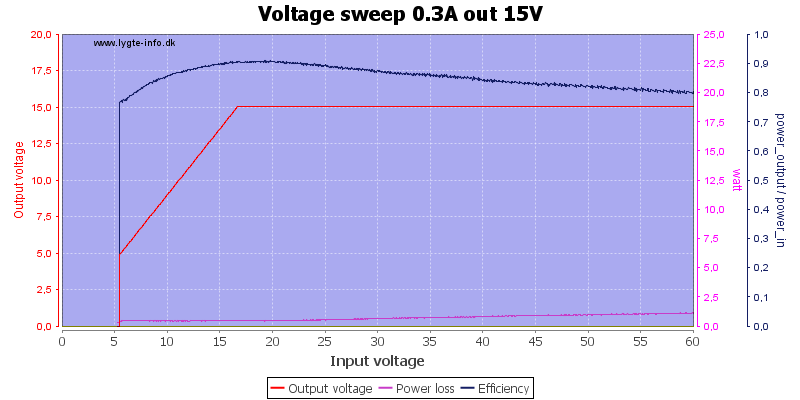














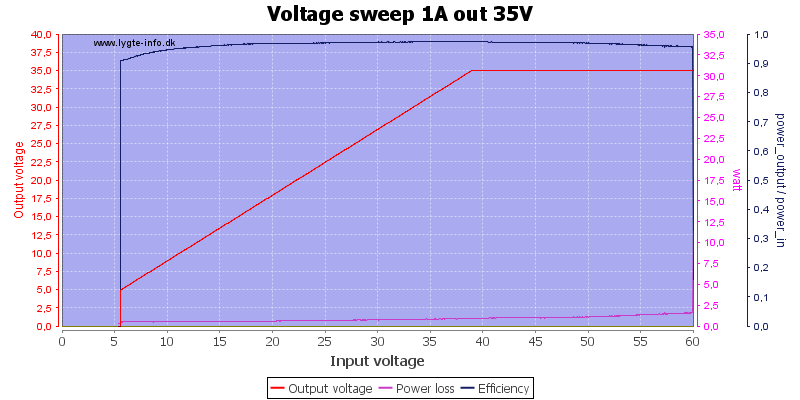












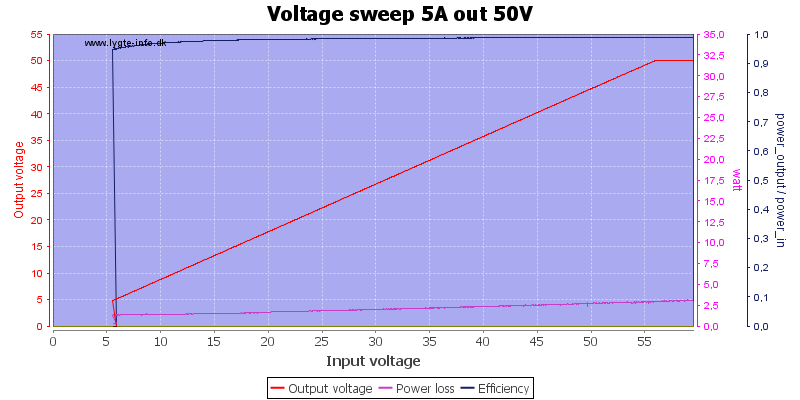
















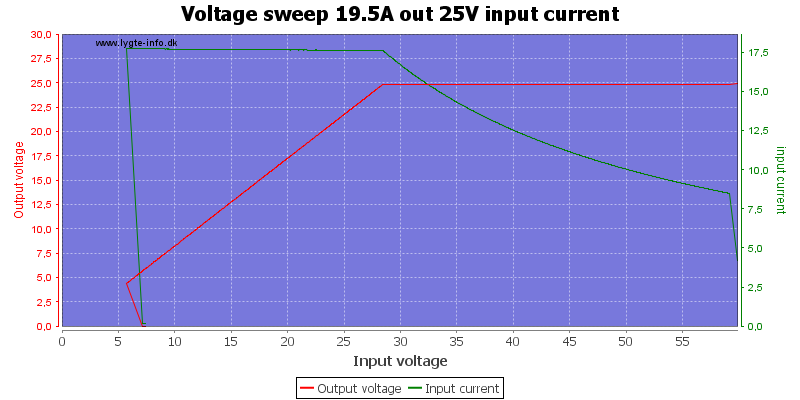
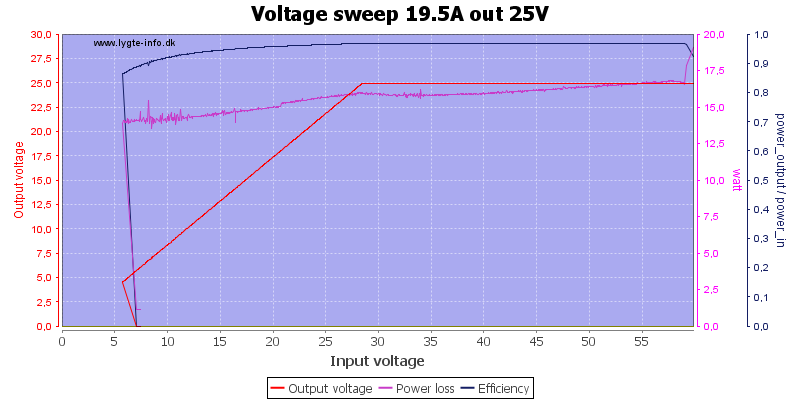


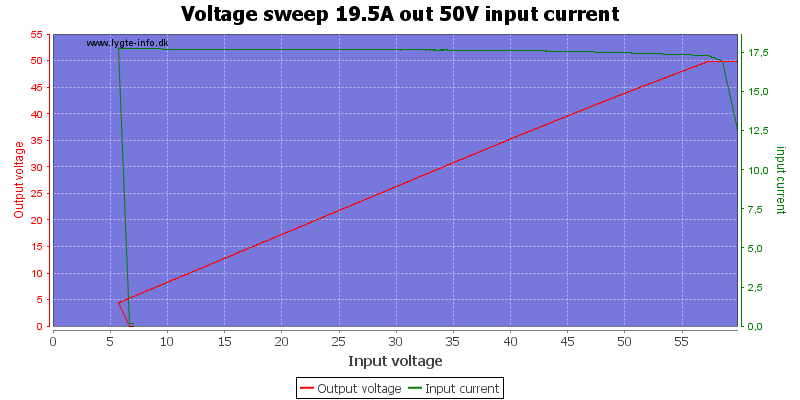

Voltage sweep, no load
Same as above, just without any output current.


Voltage sweep, output shorted
This power supply has a constant current mode, these charts show how it works at different input voltage. Output is nearly shorted.





On/off charts
How do the output behave during on/off transitions. I test 3 situations: Input power to supply on/off, using the on/off button on the supply, connecting/disconnecting the load. The load is a IT8512+.









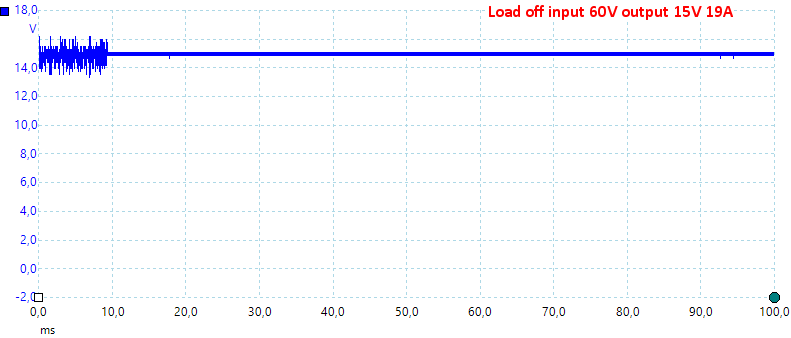
Noise charts
Noise is measured with a oscilloscope connected to the output, I use an electronic load for drawing the 19A.
